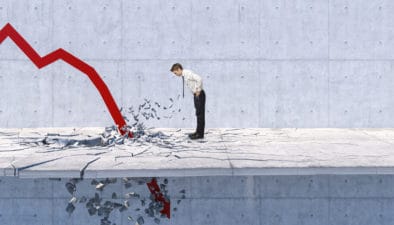In registered retirement savings plans (RRSPs), you can hold a variety of investments, including cash, GICs, bonds, and treasury bills that you earn interest from. You can also hold mutual funds, ETFs, stocks, and income trusts that can add growth to your portfolio, but these have more volatility.
When you contribute to an RRSP, that amount is subtracted from your total income for the year. The contribution and the growth that subsequently occurs will be tax deferred until you withdraw it, at which time, it’ll be taxed as income. Here are six mistakes to avoid with an RRSP, with a focus on investing.
Over contributing
Your RRSP contribution room starts accumulating when you file your first tax return. After that, you will receive a notice of assessment from the Canada Revenue Agency indicating your deduction limit. That’s your contribution room. Do not contribute more than that amount, or there will be penalties.
Experimenting with your RRSP
Do not experiment with your RRSP. You should test out your investment strategies in a non-registered account before investing in RRSPs. Apply your successful investment strategies in RRSPs because losses cannot be written off.
Placing only interest-earning investments in RRSPs
Since interest is taxed at a higher rate, investors might put all their interest-earning investments in RRSPs. Well, it really depends on your portfolio. What if your portfolio is mostly stocks?
Stocks provide higher growth than interest-earning investments, so they can grow tax deferred in an RRSP at a faster rate than in a non-registered account, where any gains or dividends are subject to tax.
Not holding high-yielding U.S. stocks in RRSPs
If Canadians hold U.S. dividend stocks, they should place the high-yielding ones such as Kinder Morgan Inc. (NYSE:KMI) and Procter & Gamble Co (NYSE:PG) in their RRSPs. Because there’s a tax treaty between the U.S. and Canada, U.S. dividends inside RRSPs won’t get a withholding tax of typically 15%.
That 15% will be withheld in a non-registered or tax-free savings account. If you use a non-registered account, you can file for a foreign tax credit to recover the withheld 15%, but the foreign dividend is still counted as income that’s taxed at a higher rate.
Imagine if you bought Kinder Morgan in a non-registered account. Instead of the 6.1% yield, you’d get 5.2%. Additionally, you’d still need to pay more taxes on those foreign dividends depending on what your marginal tax rate is.
So generally speaking, it’s better to place high-yielding U.S. stocks in RRSPs if you have the room. For low-yielding dividend-growth stocks such as Lowe’s Companies, Inc. (NYSE:LOW), you can expect to get most returns from capital appreciation than from its dividends. Lowe’s yields only 1.5% right now. One might opt to place it in a non-registered account to leave RRSP room for high-yielding U.S. stocks.
Buying Canadian dividend stocks in RRSPs
Since eligible Canadian dividends are taxed favourably in non-registered accounts, it’d make sense to invest them there instead of in RRSPs. This is assuming that you hold, for example, U.S. dividend stocks that are better placed in RRSPs. Popular Canadian dividend stocks that pay eligible dividends include Royal Bank of Canada (TSX:RY)(NYSE:RY) and Fortis Inc. (TSX:FTS).
Not holding income trusts in RRSPs
Income trusts include real estate investment trusts (REITs) that allow you to easily invest in real estate for monthly rental income. Remember to hold the ones that invest in properties and not mortgages. The latter is riskier.
Some investors have turned to REITs as substitutes for bonds due to the low-rate environment. REITs pay higher yields. However, REITs are different from real estate in that they are subject to market volatility.
Also, REITs don’t pay eligible dividends, so they are more of a hassle for tax reporting in a non-registered account. That’s another reason to hold them in RRSPs or TFSAs rather than non-registered accounts. Some popular REITs include Canadian REIT (TSX:REF.UN) and RioCan Real Estate Investment Trust (TSX:REI.UN). They pay yields of 4.3% and 5.5%, respectively.
Conclusion
Your RRSP portfolio should be a part of your entire portfolio. The important thing is to maintain a balanced portfolio that works for your risk tolerance and time horizon.








